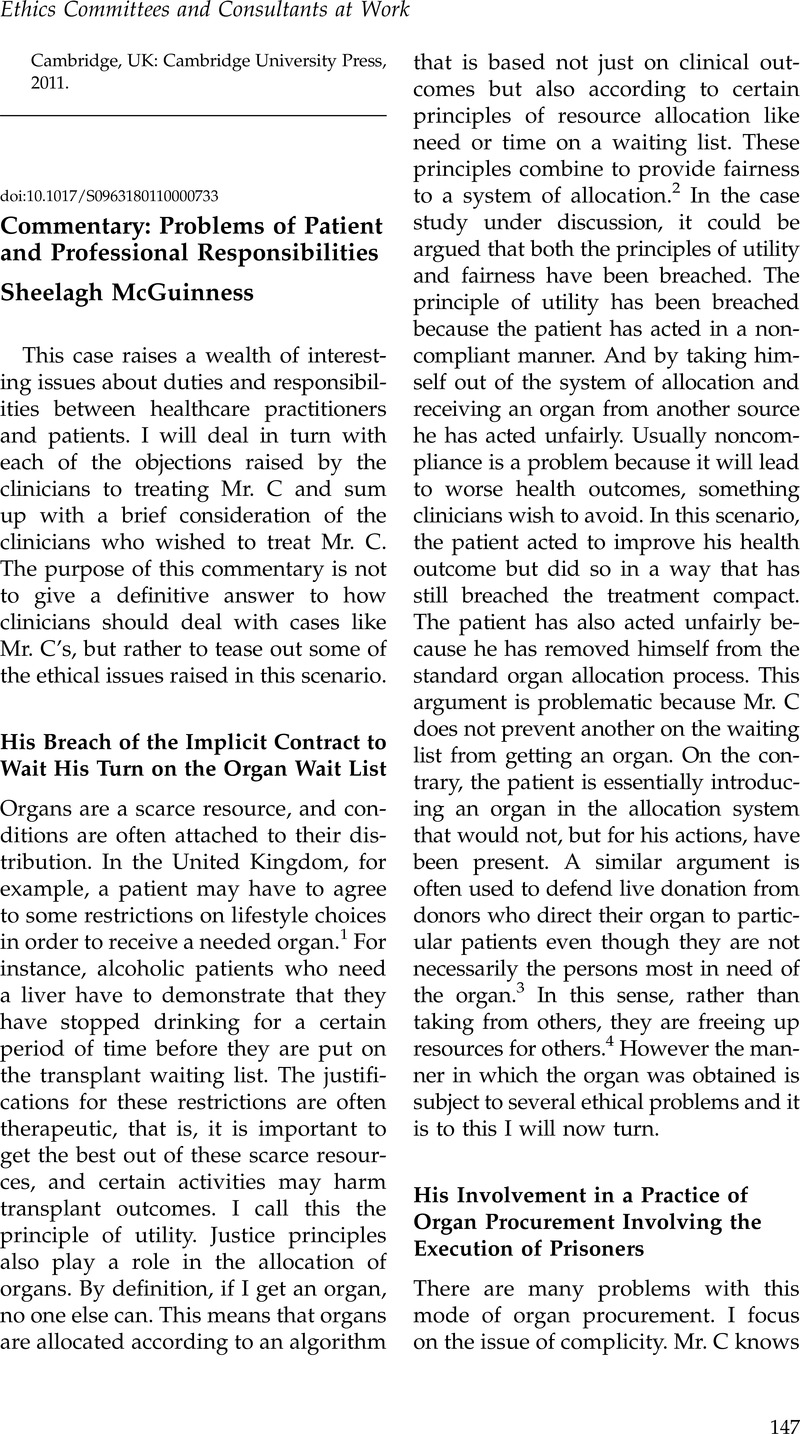No CrossRef data available.
Published online by Cambridge University Press: 11 January 2011

1. Liver Transplant; available at http://www.nhs.uk/Conditions/Liver-transplant/Pages/Who-can-use-it.aspx (last accessed 26 Jul 2010).
2. Dyer, P, McGuinness, S. The organ allocation algorithm. In: Transplantation and Organ Deficit in the UK: Pragmatic Solutions to Ethical Controversy (Cambridge University Press, forthcoming)Google Scholar.
3. Cronin, A, Price, D. Directed organ donation: Is the donor the owner? Clinical Ethics 2008;3:127–31CrossRefGoogle ScholarPubMed.
4. The patient may take resources from others by needing higher levels of aftercare as a result of poor treatment services obtained abroad.
5. Robertson, JA. Ethics and policy in embryonic stem cell research. Kennedy Institute of Ethics Journal 1999;9:109–36CrossRefGoogle ScholarPubMed; Robertson, JA. Causative vs. beneficial complicity in the embryonic stem cell debate. Connecticut Law Review 2004;36:1099–113Google ScholarPubMed.
6. Harris, J. The Value of Life. London: Routledge & Kegan Paul; 1985Google Scholar.